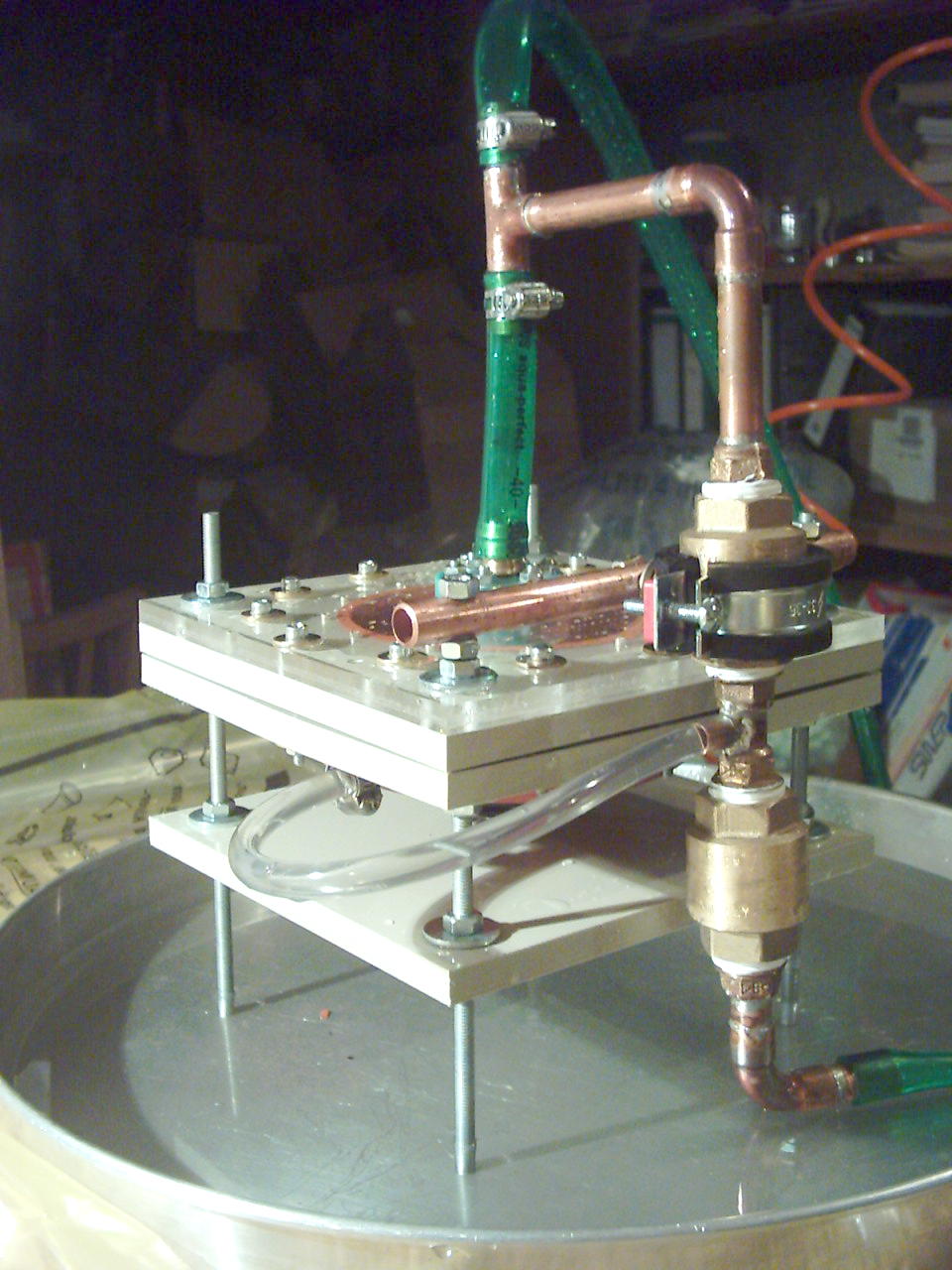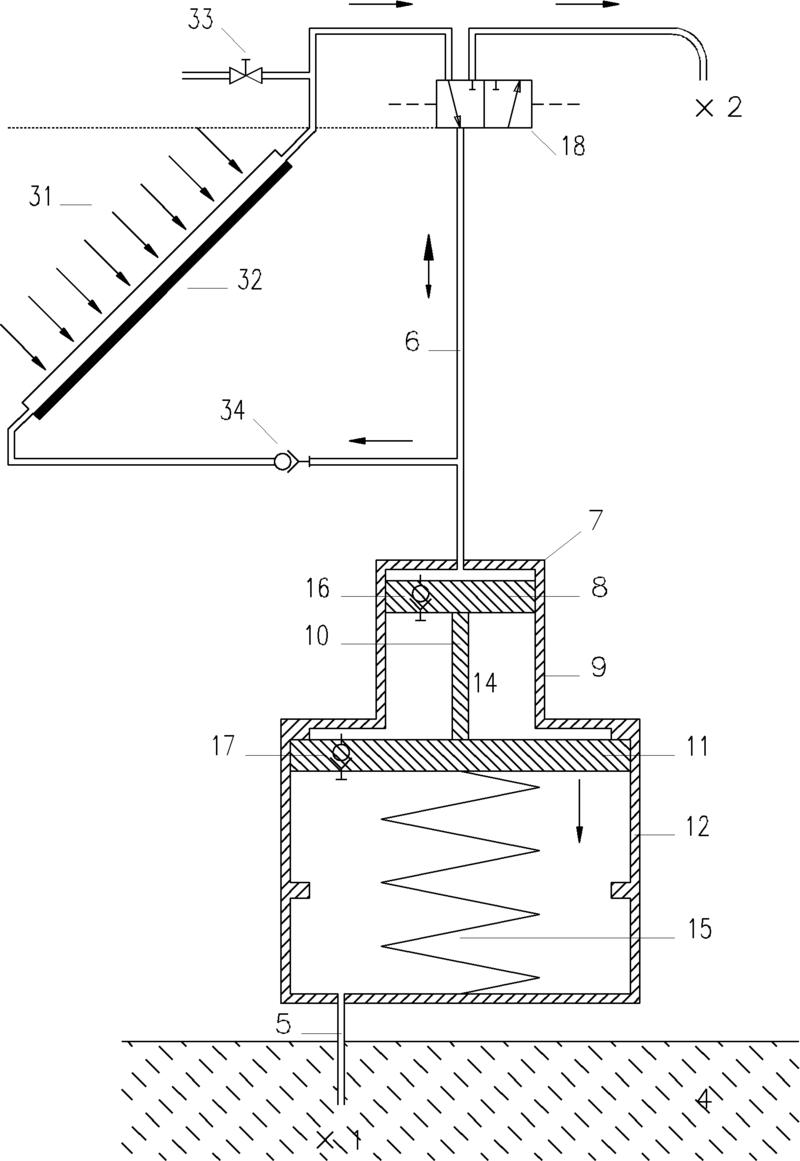Water pump driven by compressed air or steam – patented
- November 6, 2023

1. Description of pressure-shock pump - state of the art and shortcomings of the known designs
2. Which technical problem is solved and how
The object of the present invention is to realize a pump without a limited delivery height and without a separate energy transport line, which is driven by pressure surges of a drive fluid in a common drive delivery line (AFL). conveys a liquid, gaseous or vaporous conveying fluid from a starting point A through the AFL to a destination B. In a special embodiment, the drive takes place by means of a solar thermal water vapor generator in an open Rankine-like thermodynamic process. In this case, both the drive and the delivery fluid are water. In contrast to known solar steam pumps with a closed Rankine process (e.g. DE 35 42 865 A1), complex components such as a condenser and feed pump are no longer required. The compensation for the water loss due to evaporation that inevitably occurs in the open system is directly compensated for by the water pumped from the AFT. This allows a structurally simple, solar thermal pump to be realized for pumping water from (deep) wells.
2.1 Structure and components
2.2 Function
3. Designed as a solar thermal steam DSP

4. Build a prototype
4.1 - Piston/cylinder version
4.2 Membrane version
5. Patent
Declarant
Schmidt, Thomas, Dipl.Phys., 79104 Freiburg
Disclosure document
DE102007022658A1
